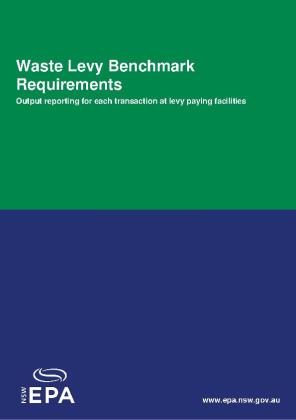About the waste levy
The details and calculation of the waste levy payable by licensed waste facilities are set out in the Protection of the Environment Operations (Waste) Regulation 2014 (the Waste Regulation) and the Waste Levy Guidelines (PDF 320KB).
The Waste Levy Guidelines contain specific legal requirements which levy liable ‘scheduled waste facilities’ must meet in addition to their obligations under the Waste Regulation.
The guidelines explain how waste is measured to calculate waste levy liability, when certain waste levy deductions can be claimed, and how records and reports are required to be made, kept and provided to the NSW Environment Protection Authority (EPA) in order for the occupier to fulfil their obligations under the Waste Regulation.
Where the waste levy applies
The waste levy applies in the regulated area of NSW which comprises the Sydney metropolitan area, the Illawarra and Hunter regions, the central and north coast local government areas to the Queensland border as well as the Blue Mountains, Wingecarribee and Wollondilly local government areas.
The waste levey is paid on
- waste received from the regulated area, if the landfill is located outside the regulated area
- all waste received at an EPA-licensed landfill, if the landfill is located in the regulated area
Waste levy for scheduled waste facilities
The following information applies to waste other than trackable liquid waste and coal washery rejects. See information about levy rates.
What does the waste levy do?
One of the NSW Government’s key priority actions is to increase recycling to limit the need for new landfills, reduce landfill disposal and turn waste into valuable resources. The Government has a range of policies in place to increase recycling and divert valuable resources from landfill back into the economy. The key economic instrument for greater waste avoidance and resource recovery is the waste levy.
Who is liable to pay the waste levy?
Scheduled waste facilities captured under Section 88 of the POEO Act including
- Scheduled waste disposal facilities (i.e. EPA-licensed landfills) which are located in the regulated area or receive waste from the regulated area
- Scheduled waste facilities that are not scheduled waste disposal facilities (e.g. EPA-licensed waste processing, resource recovery and waste storage facilities) which are located inside the regulated area or receive waste from the regulated area. See information about exempted facilites and exempted wastes.
Record-keeping requirements and reporting to the EPA
Record-keeping requirements ensure that the waste levy and deductions can be properly audited and enforced. Occupiers who pay the waste levy under section 88 of the POEO Act are required to submit monthly waste reports to the EPA.
The EPA has generated benchmark requirements (PDF 217KB) for data outputs from your software system. Please note that these requirements are not all mandatory but are a benchmark of good recording and reporting. The waste reporting definitions will help you input the correct waste code for reporting purposes.
Occupiers must report on waste that enters and leaves the facility during the reporting period. See waste reporting forms for more information about when to report.
The onus for proving levy claims for exemptions rests with the occupier of the EPA-licensed landfill site. Failure to maintain proper records could result in facilities having to pay additional levy amounts or repay previous exemption claims.
Record keeping requirements for EPA-licensed landfills (including non-leviable facilities)
An EPA-licensed landfill must keep records in accordance with Waste Levy Guideline 2 - Records of the Waste Levy Guidelines (PDF 888KB). See information about record keeping.
How to report to the EPA
Reporting can be completed and submitted to the EPA online using our Waste and Resource Reporting Portal (WARRP).
Waste Contributions Regulation : frequently asked questions
The EPA has made the Protection of the Environment Operations (Waste) Amendment (Waste Contributions) Regulation 2023. It makes amendments to the Protection of the Environment Operations (Waste) Regulation 2014 (the Waste Regulation).


